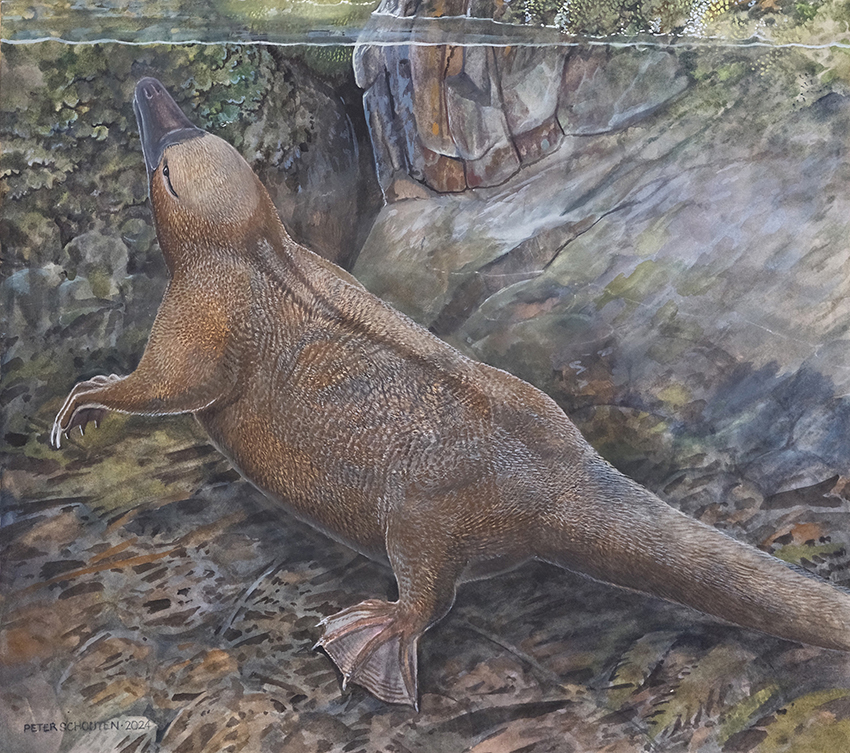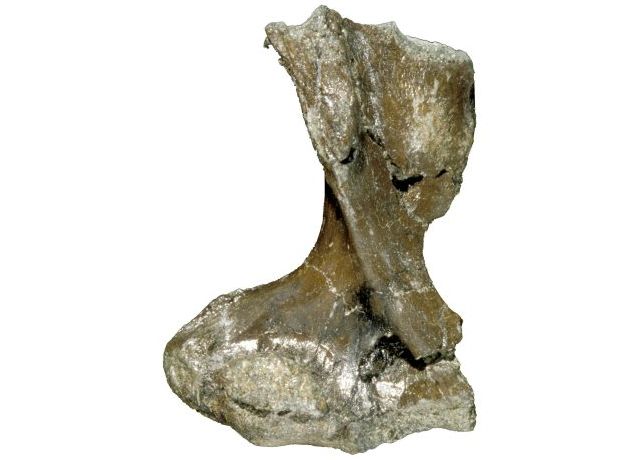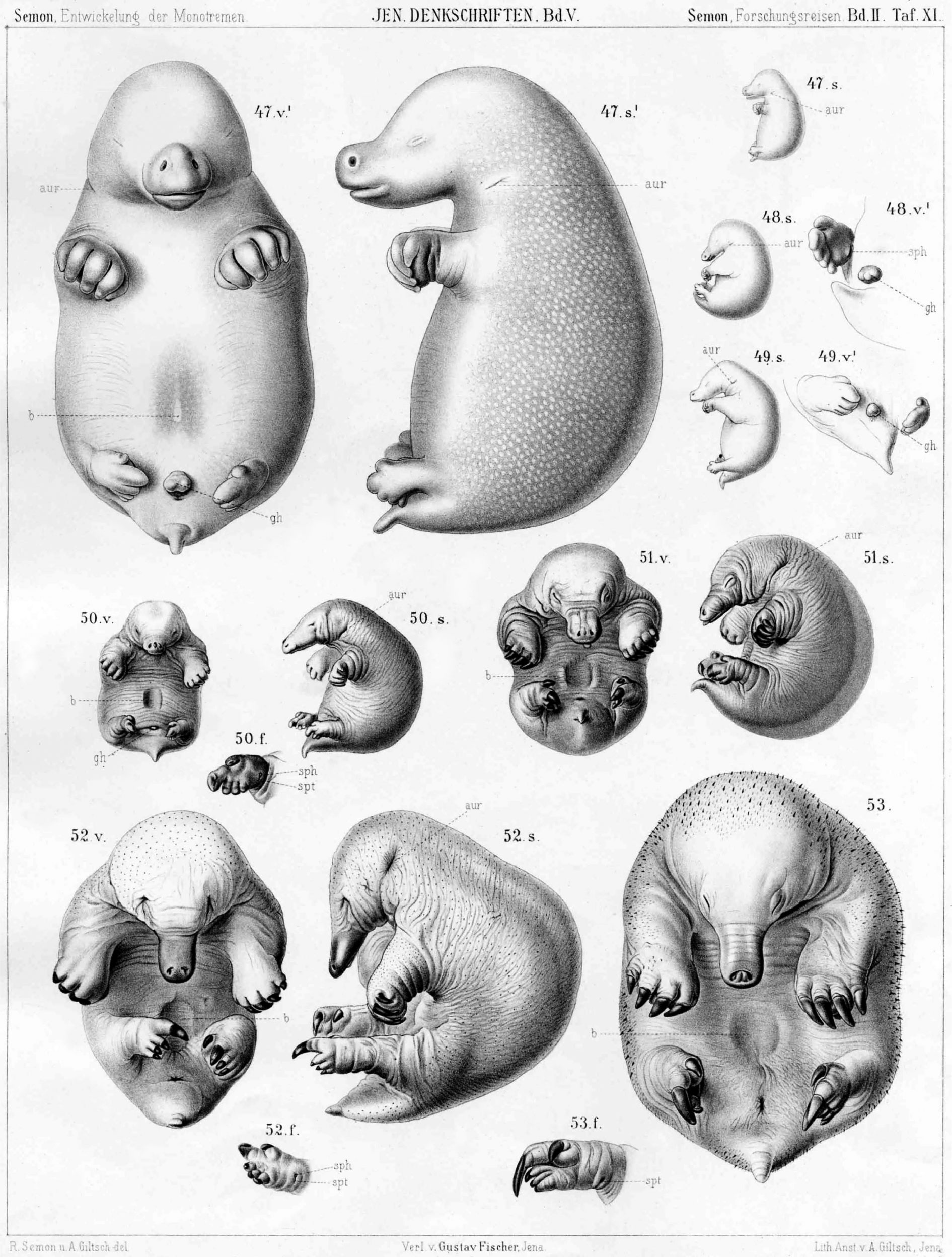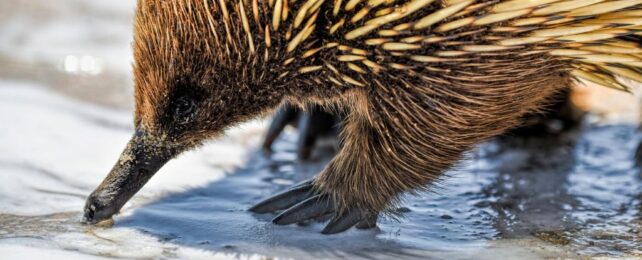New analysis of a 100-million-year-old fossil embedded in a rocky cove in Australia suggests echidnas may have evolved from swimming ancestors.
That's basically unheard of: While there are many examples of land-dwelling mammals evolving into a more aquatic lifestyle, it seems that at some point, echidnas went in the opposite direction.
Since its discovery in the early '90s, paleontologists have been debating what kind of animal left behind the fossilized arm bone. They know it was a member of the monotreme order, mammals that lay eggs instead of giving birth to live young.
Based on the bone's outward appearance, some think it belonged to a land-bound ancestor of modern echidnas. Others say it might have been a swimming monotreme that pre-dates both of its living kin, echidnas and platypus.

New analysis on the tiny humerus bone, which belonged to the prehistoric species Kryoryctes cadburyi, supports an aquatic origin story.
"While the external structure of a bone allows you to directly compare it with similar animals to help work out the animal's relationships, the internal structure tends to reveal clues about its lifestyle and ecology," says paleontologist Suzanne Hand from the University of New South Wales, who led the study.
"The internal structure doesn't necessarily give you information about what that animal actually is, but it can tell you about its environment and how it lived."
Peeking inside the fossil with microCT scans, Hand and her team discovered the bone has a thick, heavy wall and a tiny medullary cavity (the hollow space inside bones where red and white blood cells are formed).

Bones like this are seen in semi or fully aquatic mammals, like sea otters, dugongs, and platypus. Like the weight belt scuba divers use to stay underwater, these traits reduce the animal's buoyancy so it can remain underwater with little effort.
"The microstructure of the fossil Kryoryctes humerus is more like the internal bone structure seen in platypuses, in which their heavy bones act like ballast allowing them to easily dive to forage for food," says Hand.
On land, such dense and heavy bones are a disadvantage, not only because it takes more effort to lug them around, but also because they are more prone to fractures. This is why such traits are not seen in echidnas, which have very thin bone walls.
The team also conducted phylogenetic analysis, piecing together where K. cadburyi sits in the mammalian and monotreme family trees. This revealed the species is indeed a stem monotreme, sharing a common ancestor with platypus and echidnas.
It's very strange news in terms of echidna evolution. It suggests their ancestor was a swimming, burrowing monotreme that eventually hung up the towel for a very different life on land. There are a few other clues that this might be the case.
"The bill of the platypus is well known to have lots of highly sensitive receptors that detect tiny electrical currents generated by prey," Hand points out.
"And while the beak of the echidnas has fewer receptors, people have suggested that these receptors are a leftover of their platypus heritage, as are remnants of the platypus bill that can be found in the beak of echidna embryos."

Echidnas also have hind feet turned backwards, which helps them with digging, in the same way platypus use their backwards feet like rudders to propel them through water. Perhaps this is why echidnas have been known to island hop. This foot orientation isn't seen in any other mammals.
Perhaps echidnas weren't left on shore by the intrepid, water-faring platypus. Maybe echidnas were the ones that decided to venture out into the unknown.
"We're talking about a semiaquatic mammal that gave up the water for a terrestrial existence, and while that would be an extremely rare event, we think that's what happened with echidnas," says Hand.
This research was published in PNAS.
